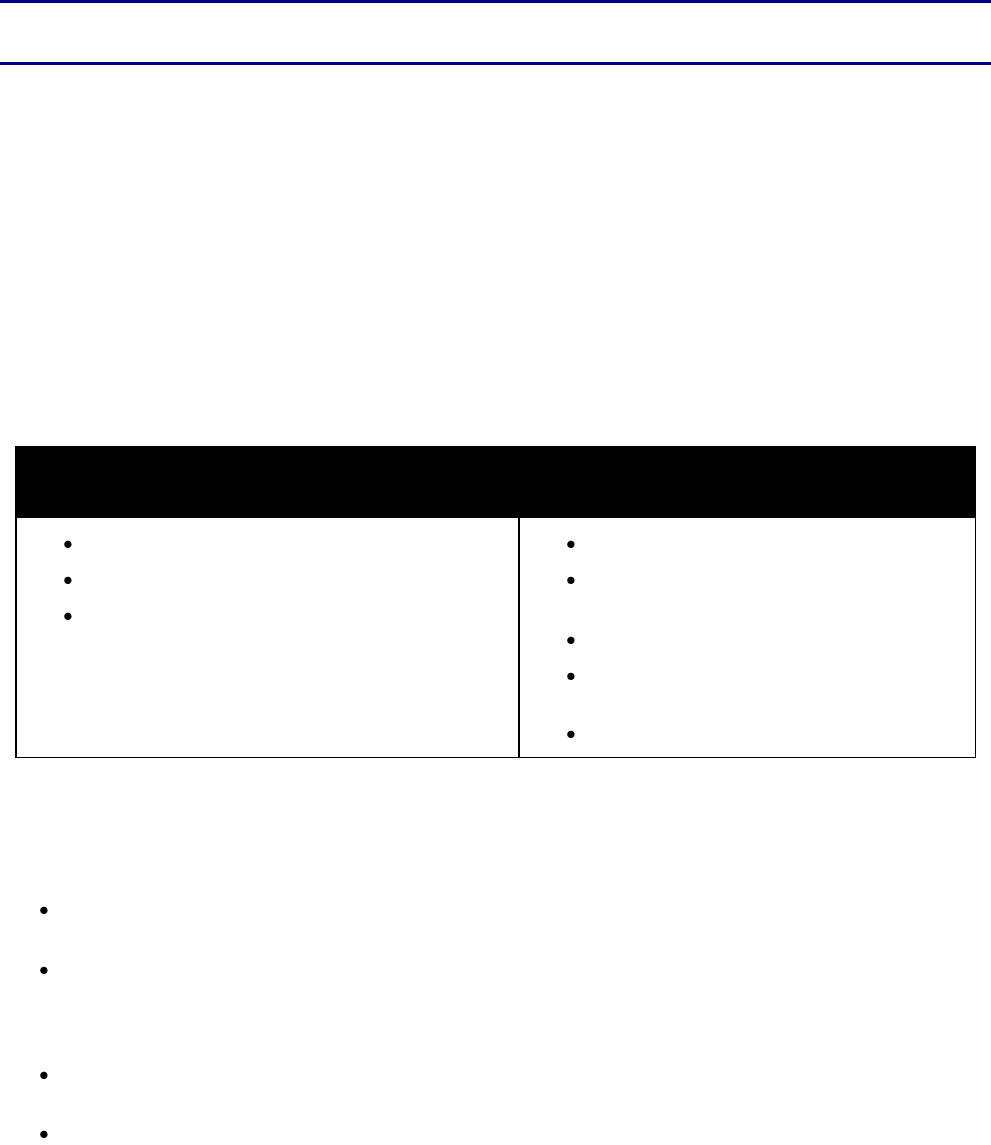
Outdoors for All Volunteer Manual 1
Teaching Mono-Skiers
What is a Mono-Ski?
A mono-ski allows people who cannot use their legs to ski sitting down. Through the combination of a
molded seat, or bucket, attached to an alpine ski by a suspension system, and hand-held outriggers, a
person can ski independently. For mono-skiers, the principals of skiing are the same as ATS. The bucket is
roughly equivalent to a stand-up skier’s boots. Good balance is a requirement to successfully mono-ski.
The Quest for Independence
The mono-ski is designed to allow a person to ski independently. As an instructor, promote this
independence throughout the lesson. Have the student do as much as possible. But during the lesson, do
not let the student get exhausted. It is your responsibility to monitor the fatigue level and assist as needed.
For example, don’t make the student get up unassisted from every fall and don’t force a student to do all of
the pushing on the flats. Use common sense.
Common Disabilities associated with Mono-
Skiers
Common Medications to Consider
Spinal Cord Injury (paraplegics)
Spina Bifida
Amputation
Analgesics (pain)
Antibacterials and Antibiotics
(infection)
Anticholinergics (bladder spasms)
Antispasmodic Medications
(spasticity)
Anticonvulsants (seizures)
Student Assessment and Equipment Fitting
When choosing a mono-ski, there are a few considerations:
If the student has a spinal chord injury, what level injury is it? A higher-level injury may require
additional support.
Check for other physical limitations: balance, ability to rotate the torso, arm strength. Any deficiencies
may need to be compensated for. For example, a person who normally walks may tire easily from the
upper-body workout involved in mono-skiing or a higher-level spinal chord may limit a student’s ability
to pressure the ski through fore/aft movements.
Remember most mono-skiers have limited or no feeling in their legs. Be sure to keep the legs warm
and protected. Make sure straps do not cause chaffing or injury.
Is the student prone to pressure sores? Additional padding may be required to avoid sores. For
students worried about sores, a Yetti-style seat may be more appropriate.

Chapter 5: Lesson Plans — Teaching Mono-Skiers
2 Outdoors for ALL Volunteer Manual
The Bucket
The seat should be snug and comfortable. Choose a ski that has a bucket best suited for the student. We
have two basic styles:
A more up-right, comfortable seat — good for almost all mono-skiers (Yetti)
A more angled, athletic seat — better for skiers with more control of their body (Shadow, Grove)
Adjust straps so that there is no movement inside the bucket. Think of it as the equivalent to a ski boot. It
needs to be tight, but not painful. When tightening straps, watch out for leg bags and sensitive areas. In
general, strapping should be as low as possible, allowing fore/aft and rotary movement of the torso.
Continuously check the straps to make sure they are snug, especially after a fall. Remove any
snow that accumulates in the bucket after a fall as well.
Adaptations — Higher-level injuries may require additional strapping to help restrict movements. For
example, a T8 might be able to move forward, but not back. A strap can limit the movement forward to a
point where the student can recover and move back at will. Be careful not to limit flexibility and mobility
however. The point is to use what the skier has available, and compensate for anything that is not available.
The Foot Tray
The foot tray provides a platform to secure and protect the lower legs and feet. It should be adjusted to allow
for bent knees and an ―athletic‖ position. The knees should be bent enough to help the student mo ve
forward and backward easily. A higher-level injury may require the knees to be bent more to keep the
student’s body from moving too far forward.
Outriggers
Hand-held outriggers provide balance and a mechanism for moving around on flat terrain. In the crutch
position, outriggers are used for when maneuvering the ski in a static position, such as pushing on the flats
and loading a chairlift.
Fitting Outriggers — When in the neutral athletic position, with elbows relaxed and bent comfortably, the
outriggers should sit on the snow between the knees and feet.
For beginners, outriggers can be a little longer to provide a more stable platform. As skiers become more
advanced, the outriggers are used less and less on the snow, although be sure they are long enough for the
skier to push up onto a chairlift in the loading position.
Adjusting the brake — For beginners, allow for more braking, but not so much that the skier can’t glide
without braking. As the skier advances to more difficult terrain, less brake is needed.
Dowel Tests
Perform a dowel test when setting up a student. This ensures that the person’s body is properly balanced on
the ski. Record the appropriate settings in the student’s progress report. For details, see the ―Teaching Tips
and Tricks‖ section of the SFA Manual.

Chapter 5: Lesson Plans — Teaching Mono-Skiers
Outdoors for All Volunteer Manual 3
Mono-Ski-Specific Teaching Techniques
Teaching a mono-skier follows the same progression as a stand-up alpine skier. The movement patterns are
generally the same, except for a sit-down skier, the movement patters are generating by the lowest available
body parts.
It is essential to provide mono-skiers a good foundation by working on the flatlands. The purpose of the
flatlands is to develop the necessary balance and rotary skills to turn and control the ski. Without flatlands, a
mono-skier will have great difficulty learning to blend the additional skills.
Chairlift Loading and Unloading
Safety is the key!! If needed, ask the lift operator to slow down or stop the chair. For more information
about chairlift procedures, including emergency procedures, see Chapter 2, "Safety Procedures and
Policies" in the Outdoors for All Volunteer Manual.
Keys to success:
Do a practice lift with your student and assistant before entering the loading ramp. Decide who counts.
Explain to the student what will happen and what you need the student to do. Allow the student to help
as much as possible.
When loading, once the ski is on the chair, the student should lean back and the bucket should be at
the back of the chair. When offloading, the student should lean forward.
Communicate with the lift operators at both the top and the bottom of the lifts. Never assume they
know or remember what you need. Report any problems with lift ops to your Lead Volunteer.
Make sure the safety strap is accessible. Do not leave the loading area until the strap is connected to
the chair. Signal the lift operator when it is attached (usually done by the lifter).
For unloading, do not remove the safety strap from the chair until your skis touch the snow on the
ramp. Stop the chair if necessary.
The first time the student rides the chairlift, stop the lift when loading and ask the lift operator to warn
the operator at the top of the lift. Stop the lift for unload.
The Loading Mechanism
Use common sense when using the loading mechanism. Some mono-skis work best without being jacked-
up. Unlock the ski so it can be raised, and then have the student ―jump‖ onto the chair by pushing up on the
outriggers. The student may require some assistance.
Never place your hand in the loading mechanism area while it is jacked up! Avoid getting
pinched by the loading mechanism.

Chapter 5: Lesson Plans — Teaching Mono-Skiers
4 Outdoors for ALL Volunteer Manual
Lesson Plan: Introduction to Equipment
Goals
Introduce the equipment before loading the skier into the ski. Explain functional aspects and safety
features.
Transfer to the ski and setup equipment.
Perform a dowel test and adjust the ski to balance.
Teach appropriate body position — neutral athletic stance:
Outriggers next to heel of boot, hands relaxed, elbows bent and by hips, shoulders relaxed, head up,
eyes forward.
Show how outriggers work: walking position, skiing position.
Demonstrate how loading mechanism works.
Explain the safety code.
Teaching Tips
Perform these exercises for the first time indoors and take as much time as needed.
Explain the concept of the seat as the boot and the importance of a snug fit.
Note any adjustments to the equipment on the skier’s progress report.
Remember...independence is the goal. Explain what to do, and help the student as necessary, but
allow the student to do as much as possible from the very beginning. Allow the student to do as much
of the loading and adjustments.
Exercises
Have student transfer to the ski and demonstrate how straps work.
Dowel test the ski and take time to set up equipment properly. Log this information on the student’s
progress report.
Demonstrate the appropriate body position and balance.
Demonstrate use of outriggers. Have student practice switching outriggers from crutch to skiing
position.
Experiment with balance: slowly rock forward and back, with outriggers on the ground and with
outriggers in the air.
Explain and demonstrate the loading mechanism. Have student practice.
NOTE: All emergency straps should have locking carabiners. Safety straps should have non-
locking carabiners.
Skills Concept (BERP) Review
Balancing movements — Maintain balance while moving torso forward and back and outriggers
up/down/out.
Edge-control movements — Maintain a flat ski.
Rotary movements — Turn head and upper body.
Pressure-control movements — Move torso forward and back.

Chapter 5: Lesson Plans — Teaching Mono-Skiers
Outdoors for All Volunteer Manual 5
Lesson Plan: Flatland Drills
Goals
Become familiar with the equipment on flat terrain.
Focus on developing good balance, good body position.
Teach how to move around on flats using outriggers.
Teaching Tips
Don’t be afraid to spend extra time on the flats! Run through all of the movement patterns in the
safe environment before moving to the chair lift. Explain the importance of the flatland drills to the
student.
Have the skier do as much of the work as possible, but be careful not to wear them out too soon. Keep
the student successful, but don’t interfere with learning by doing too much. If you hold them up all of
the time, they will never learn for themselves!
It is easier to push a mono-ski backward than forward. When moving the student around on the flats,
push from the foot tray and have the student maintain balance while you push. If possible, have the
student help push using the outriggers.
If skier continues to have balance problems, check that the ski is balanced and set up correctly. The
hips must be square. Make sure the straps are positioned correctly to provide support where
necessary but still allowing the skier to move as much as possible.
Exercises
Balancing with outriggers off the ground. Add moving the body forward and back while maintaining
balance as well as lifting both outriggers off the ground.
Push around using the outriggers in crutch position and in skiing position.
Lift the ski off the ground using the outriggers in crutch position.
Star turns: turning the ski in a circle while lifting the ski off the ground using outriggers in crutch
position.
Teach how to use outrigger brakes to stop in lift lines. Warn the student never to stop the ski using
outriggers when skiing (similar to using poles to stop you).
Skills Concept (BERP) Review
Balancing movements — Developing static balance through proper body and outrigger position.
Edge-control movements — Avoid leaning the ski, and pivoting a flat ski.
Rotary movements — Turning the ski using the outriggers and turning the head/upper body.
Pressure-control movements — Moving body forward and back and from side to side.

Chapter 5: Lesson Plans — Teaching Mono-Skiers
6 Outdoors for ALL Volunteer Manual
Lesson Plan: Straight Run
Goals
Add movement to flatland drills by having skier do a straight run.
Challenge the skier’s balance while focusing on maintaining correct body positioning.
Control speed using the outrigger brakes.
Teaching Tips
Don’t be afraid to spend extra time on the flats!
Use terrain that allows for a natural stop. As student becomes more comfortable, increase speed and
length of the straight run.
Avoid bucket-assisting as much as possible. If the student is having trouble maintaining balance, go
back to flatland balance drills until the student is comfortable. Some bucket assisting is necessary to
keep a student from falling and becoming frustrated...but try to let the student correct himself before
you correct him.
Have the student do as much of the pushing uphill as is appropriate. Watch for fatigue. Assist as
needed.
It is easiest to perform the flatland and straight run lessons in your boots (assuming you have good
terrain). Save your skis for when you are on the slopes.
Exercises
Straight run to a natural stop.
Straight run to a stop using outrigger brakes.
Straight run change ups: lifting outriggers off snow, braking and releasing.
Introduce outrigger braking — maintain stance and apply pressure to the outriggers by lowering the
elbows and driving the hands down and forward.
Skills Concept (BERP) Review
Balancing movements — Maintain balance while moving.
Edge-control movements — Maintain flat ski.
Rotary movements — Maintain straight run with no rotary.
Pressure-control movements — Maintain equal pressure on outriggers.

Chapter 5: Lesson Plans — Teaching Mono-Skiers
Outdoors for All Volunteer Manual 7
Lesson Plan: Beginning Wedge Turn Equivalent (on the flats)
Goals
Add slight changes of direction to the straight run to introduce turning. Gradually increase size of turn.
Turning in each direction to a stop, using outrigger braking if needed.
Teaching Tips
Begin with slight changes of direction. Increase turn size while increasing speed.
Make sure student is keeping a flat ski and is using rotation of the body to turn instead of leaning.
Try a straight run while turning one outrigger on slight edge to create friction. Emphasize a ―tall‖
centrered body position.
Watch the outriggers. Too much pressure on one or both can be indications of balance problems.
Have student turn his head and point his chin in the direction. If the torso is not turning with the head,
try having the student point his belly button in the direction of the turn. Make sure the skier is using
rotary skills instead of leaning. With new shaped skis, emphasize edge to edge change, less for and
aft movements. Keep shoulders level, drop hip pocket to side of desired turn
Exercises
In straight run, begin looking in direction of the turn.
Increase size of direction changes while keeping outriggers on the snow. Ski in front of student and
have him follow your tracks. Vary the size of the turns.
Turning in one direction to a stop.
Avoid the ―open the door‖ technique unless the skier is having difficulty getting the ski to turn. This
technique is normally introduced at a more advanced stage. For a beginner, keep it simple. Focus on
looking in the direction you want to go.
NOTE: Skier must be able to perform beginning wedge turns before getting on a chairlift!!
Skills Concept (BERP) Review
Balancing movements — Maintain balance while moving.
Edge-control movements — Maintain flat ski.
Rotary movements — Slight rotations of upper body in direction of the turn.
Pressure-control movements — Maintain equal pressure on outriggers. Lean forward slightly to
help initiate the turn and return to center to finish the turn.

Chapter 5: Lesson Plans — Teaching Mono-Skiers
8 Outdoors for ALL Volunteer Manual
Lesson Plan: Wedge Turn Equivalent
Goals
Learn to ride the chairlift.
Increase size and variety of turns on beginner terrain. Turns should be on flat, skidded ski. Avoid
leaning and edging at this level.
Develop ability to perform medium- to long-radius turns to control speed. Explain how turn shape
controls speed.
Work on turn initiation with increased outrigger involvement.
Teaching Tips
DO NOT MOVE TO THE CHAIRLIFT until the skier can make unassisted turns on the flats.
Explain chairlift loading and unloading procedures to the student. Again, have the student do as much
as possible to encourage independence. But...SAFETY FIRST!
Make sure student is keeping a relatively flat ski and is using rotation of the body to turn instead of
leaning.
Avoid bucket assisting. If necessary, have the student traverse and stop. Then bucket assist through
the turn and allow the student to traverse. When bucket assisting, try to interfere as little as possible.
You are only the safety net, not the controlling force.
Exercises
MILEAGE!! Have student follow your tracks. Vary turn size.
Practice traversing.
Uphill Christy Fan progressions — allow student to become comfortable with turning uphill to slow
down and stop.
Garlands — focus on either turn initiation or finishing the turn. Show how leaning forward and looking
downhill starts a turn and how returning to neutral position helps end a turn.
Skills Concept (BERP) Review
Balancing movements — Maintain dynamic balance while moving.
Edge-control movements — Maintain flat ski while turning.
Rotary movements — Slight rotations of upper body in direction of the turn.
Pressure-control movements — Maintain equal pressure on outriggers. Lean forward to help
initiate the turn and return to center to finish the turn.

Chapter 5: Lesson Plans — Teaching Mono-Skiers
Outdoors for All Volunteer Manual 9
Lesson Plan: Wedge Christie Turn Equivalent
Goals
Control speed using turn shape and terrain instead of outrigger braking. Increase size and variety of
turns on beginner terrain.
Introduce opening-the-door concepts for turning. Practice statically first.
Begin introducing edging control by encouraging outrigger matching.
Initiate turns faster, switching between medium– and short-radius turns.
Increase fore/aft pressure movements and countering during turns for more active crossover.
Teaching Tips
Work on more active outrigger use as well as more dynamic body movement. Encourage matching of
outriggers throughout turn, but keep the open-the-door technique simple. Do not introduce countering
or reaching downhill yet.
Make sure student is using rotation of the body to turn instead of leaning.
Take known drills and experiment with different body and outrigger positions. Show how leaning the
body forward and pointing outriggers down the hill initiates turns. Let the student experiment and find
what works best. It may be different for different students.
Follow basic ATS progressions.
Exercises
MILEAGE!! Practice variety of turn shapes.
Uphill Christie Fan progressions — experiment with body positions.
Falling leaf — try leaning too far forward, too far back, centered and notice differences.
Side slipping — begin experiments with edging. The body stays down the hill.
Open-the-door — work on one arm at a time and with outriggers in different positions. Have student
feel the differences.
Garlands — experiment with opening the door during garlands.
Skills Concept (BERP) Review
Balancing movements — Maintain dynamic balance while moving at greater speeds.
Edge-control movements — Maintain flat ski while initiating a turn with slight edging at end of turn.
Rotary movements — Slight rotations of upper body in direction of the turn. Enhanced outrigger use
provides slight countering.
Pressure-control movements — Lean forward to help initiate the turn and return to center to finish
the turn.

Chapter 5: Lesson Plans — Teaching Mono-Skiers
10 Outdoors for ALL Volunteer Manual
Lesson Plan: Parallel Turns and Beyond
Goals
Skiing any run in control with more active and controlled turning.
Reaching down the fall line with outriggers.
Greater upper and lower body separation.
Carving turns.
Teaching Tips
Encourage earlier turn initiation, more active carving.
The skier should have minimal weight on the outriggers by this level.
The skier should be completely independent and should have a technical understanding of the mono-
ski he uses.
At this level, follow basic ATS progressions.
Exercises
Hockey stops
Mixed turns: short-radius, swing turns, etc.
Side slipping
Falling leaf
Skiing bump runs
Racing
Skills Concept (BERP) Review
Balancing movements — Maintain dynamic balance with more active outrigger use.
Edge-control movements — Use countering to edge ski during turns for carving.
Rotary movements — Increase countering through rotation of upper body in direction of the turn,
creating angles with hips.
Pressure-control movements — More dynamic pressuring of the ski. Lean forward to help initiate
the turn and return to center to finish the turn.
SKIFORALL Volunteer Manual 5.11
